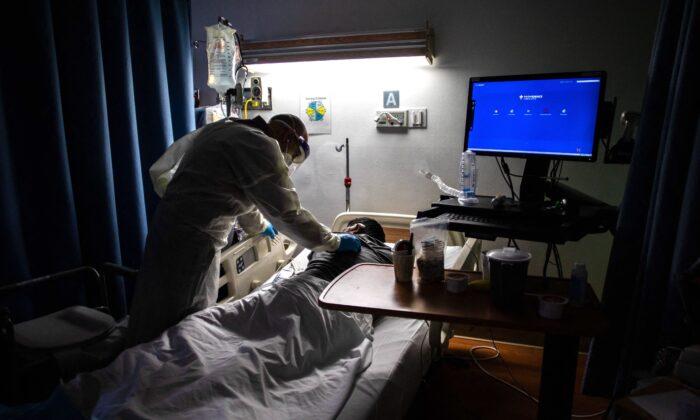Can rehabilitative programming help reduce the likelihood that a convicted felon will victimize again upon release? It has been a question that the public, law enforcement, and budget-hungry non-governmental organizations have wrestled with for decades—and certainly will for the foreseeable future.
I can tell you with 100 percent certainty that rehabilitative programming, when delivered by committed instructors, to the right risk level of offender, for the correct duration, for a specific need, maybe, sometimes lowers risk. Translation: If screening and delivery of rehabilitative programming are done correctly, it can be one in a basket of tools to assist those willing to be assisted in creating a new path. As with any endeavor, you cannot maintain efficacy if you don’t measure outcomes using a multi-variant analysis.
Here is the dirty little secret that many in the business are unwilling to share: Like any prescription medication, make a mistake in any of the above list, and a doctor maybe violating their Hippocratic Oath to “first do no harm.” Poor execution leads to an increased likelihood of criminality with worse recidivism rates than if we do nothing at all. Just like giving heart medication to treat diabetes or giving 120 mg instead of 12 mg, poor utilization can actually kill.
The California Department of Corrections and Rehabilitation (CDCR), Division of Rehabilitative Programs (DRP) is responsible for the management of roughly a half a billion dollars (annually) worth of taxpayer funds. These funds are earmarked for service and treatment delivery to those incarcerated in state prisons and those who are released to supervision. DRP enters into very large sub contacts with rehabilitative service providers who more often than not, further sub contract with local providers for rehabilitative programming. I cannot tell you the exact number, but CDCR is funding over 400 hundred unique treatment programs through its maze of sub contractors throughout California.
If you ask, “How much does it lower crime?” you would expect that the impact to recidivism could be articulated by program, risk level, age, education, housing, gender, etc. Further, you could begin to understand the financial value of programmatic intervention—“an ounce of prevention equals a pound of cure.” You would assume the the good numerical outcomes would be shouted from the mountain tops to ensure future funding and the expansion of investment. Instead you hear singular anecdotal examples of success, or, “We believe that evidence based programs with proper investment will lower recidivism and costs in the future,” year after year.
The real answer is they don’t know. All the tracking and analytical tools currently exist to grind the data and spit out a number—could it be they don’t want to know?
Getting a statewide number on general recidivism reduction due to CDCR-DRP investment is nearly impossible. A 2018 report by the Auditor of the State of California offices (report number 2018-113), states the following: “Corrections’ Implementation of Certain Rehabilitation Programs Has Not Resulted in Demonstrable Reductions in Recidivism.”
If several hundred programs and 500 million of CDCR’s budget is resulting in near ZERO net impact, what gives? There are some local providers and programs that demonstrate very positive results. I am personally familiar with their targeted success. To reach a net zero positive impact and cancel them out, some programs must not be following the good practices necessary to protect the public and are generating increased rates of recidivism!
I can hear you asking, “Mr. Eckenrod, why don’t they make the measurements and fire those who fall short?” Well, you just answered your own question. The incestuous relationship between high-level governmental employees, post-retirement plans, and powerful multi-national program providers/contractors make the lens I evaluate their motivations with quite opaque.
Many of the largest rehabilitative program providers to the state of California are literally transitioning the majority of their revenue generation from private prisons to post-release programming. They have smartly changed their names to appeal to the woke—so Wackenhut Corrections Corporation becomes Geo Care, and Correctional Corporation of America becomes CoreCivic. Wouldn’t you have loved to be a fly on the wall for those focus groups?
The CDCR budget for 22-23 will be over $14 billion, while early releases of inmates continue to happen. Fewer inmates with higher total budgets will continue the trend of higher per inmate costs year over year. The California Legislative Analyst Office reports that the incarceration cost per inmate moved from $57,000 to $106,000 in 11 years. What has the increased cost bought us? Are we deconstructing one industrial complex for another that’s more palatable to the, “new agenda”?
If the result was a few folks getting fat on state money it would be one thing, but using the promise of rehabilitative efforts as the excuse to release early is another. The “promising practice” or “making the right investments” becomes the psychological lubricant to provide cover for those releasing tens of thousands of serious and violent felons to programs (aka your community) that are broken and failing to meet their commitments.
Programming can work for some, but let’s not let greed, politics, and a lack of accountability ruin one of the tools governments use to protect the public—because don’t forget, the 3-year recidivism rate for an offender that is still doing a 10-year sentence is pretty near zero!





